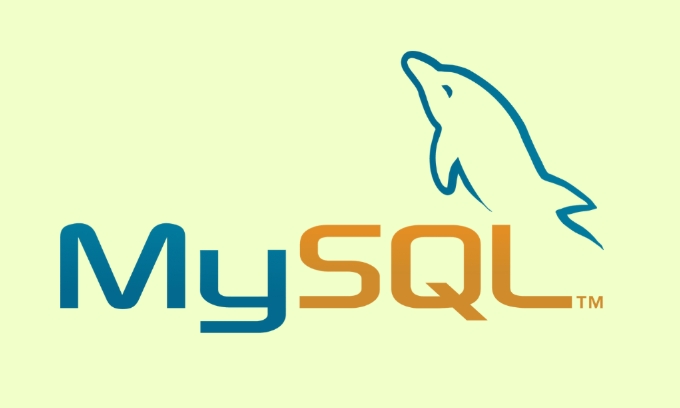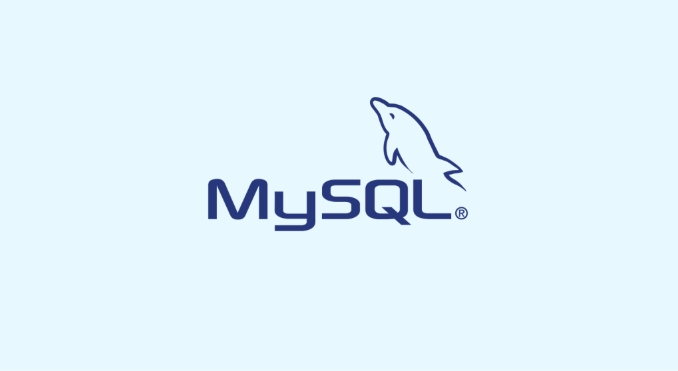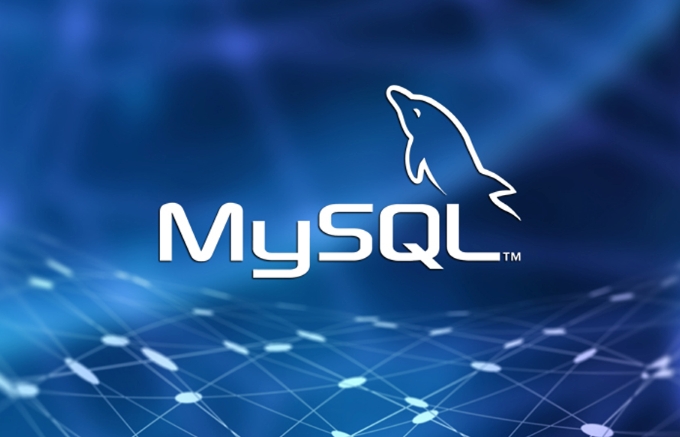The default path of MySQL socket files on Mac is usually /tmp/mysql.sock or /var/mysql/mysql.sock, but the specific location depends on the installation method and configuration. 1. You can confirm the path by looking for the my.cnf configuration file and view the socket configuration item in the [mysqld] and [client] sections; 2. Log in to MySQL and execute the SHOW VARIABLES LIKE 'socket' query; 3. Check the log file such as /usr/local/var/log/mysql/error.log to obtain record information. If the socket file cannot be found, it may be because the service is not running, the path is changed, or the permissions are insufficient. You can try restarting MySQL, checking permissions, or modifying the configuration file to set the socket path uniformly to resolve the problem.

The location of MySQL socket file on Mac actually depends on your installation method and configuration. By default, MySQL socket files are usually placed in /tmp/mysql.sock or /var/mysql/mysql.sock , but sometimes they may appear elsewhere, especially if you have customized configuration files.

Common MySQL socket file paths
There are several common socket file paths on Mac:

-
/tmp/mysql.sock -
/var/mysql/mysql.sock -
/usr/local/var/run/mysql/mysql.sock
If you are not sure about the specific location, the most direct way is to view the MySQL configuration file my.cnf or query the currently running configuration information through the command line.
How to confirm the socket path currently used by MySQL?
You can use the following methods to confirm the socket file location used by the current MySQL instance:

-
View MySQL configuration file
Open the terminal and enter the following command:sudo find / -name my.cnf
Then open the found configuration file and look for
socketconfiguration items in the[mysqld]and[client]sections. Use the mysql command to query
If MySQL is running, you can log in to the MySQL console to execute:SHOW VARIABLES LIKE 'socket';
This displays the socket file path currently used by MySQL.
Check the startup log
If you use brew to install MySQL, the log file will usually be in/usr/local/var/log/mysql/error.log, and the location of the socket file will also be recorded.
What if the socket file cannot be found?
If an error is reported when connecting to the database, it says mysql.sock cannot be found, it may be because:
- MySQL is not running normally. First use
brew services listto check whether MySQL is running. - The socket file is temporarily placed in other directories, such as
/private/tmp/. - Permission issues result in the failure to create or access the socket file.
Solutions include:
- Restart MySQL:
brew services restart mysql - Check permission settings to ensure that MySQL has permission to write to the target directory
- Modify the configuration file and specify a stable socket path, such as set to
/tmp/mysql.sock
Suggestions for modifying the path of socket file
If you plan to modify the storage location of the socket file, remember to modify the configuration of the two parts of [mysqld] and [client] at the same time to keep it consistent. For example:
[mysqld] socket=/tmp/mysql.sock [client] socket=/tmp/mysql.sock
After the modification, restart MySQL will take effect. This can avoid errors caused by inconsistent paths when client connections.
Basically that's it. Different installation methods (such as native installation, brew installation, Docker) may be somewhat different, but just find the configuration file or use the command to check it out to determine the specific location of the socket file.
The above is the detailed content of mysql socket file location mac. For more information, please follow other related articles on the PHP Chinese website!

Hot AI Tools

Undress AI Tool
Undress images for free

Undresser.AI Undress
AI-powered app for creating realistic nude photos

AI Clothes Remover
Online AI tool for removing clothes from photos.

Clothoff.io
AI clothes remover

Video Face Swap
Swap faces in any video effortlessly with our completely free AI face swap tool!

Hot Article

Hot Tools

Notepad++7.3.1
Easy-to-use and free code editor

SublimeText3 Chinese version
Chinese version, very easy to use

Zend Studio 13.0.1
Powerful PHP integrated development environment

Dreamweaver CS6
Visual web development tools

SublimeText3 Mac version
God-level code editing software (SublimeText3)
 How to use PHP to develop a Q&A community platform Detailed explanation of PHP interactive community monetization model
Jul 23, 2025 pm 07:21 PM
How to use PHP to develop a Q&A community platform Detailed explanation of PHP interactive community monetization model
Jul 23, 2025 pm 07:21 PM
1. The first choice for the Laravel MySQL Vue/React combination in the PHP development question and answer community is the first choice for Laravel MySQL Vue/React combination, due to its maturity in the ecosystem and high development efficiency; 2. High performance requires dependence on cache (Redis), database optimization, CDN and asynchronous queues; 3. Security must be done with input filtering, CSRF protection, HTTPS, password encryption and permission control; 4. Money optional advertising, member subscription, rewards, commissions, knowledge payment and other models, the core is to match community tone and user needs.
 Automating MySQL Deployments with Infrastructure as Code
Jul 20, 2025 am 01:49 AM
Automating MySQL Deployments with Infrastructure as Code
Jul 20, 2025 am 01:49 AM
To achieve MySQL deployment automation, the key is to use Terraform to define resources, Ansible management configuration, Git for version control, and strengthen security and permission management. 1. Use Terraform to define MySQL instances, such as the version, type, access control and other resource attributes of AWSRDS; 2. Use AnsiblePlaybook to realize detailed configurations such as database user creation, permission settings, etc.; 3. All configuration files are included in Git management, support change tracking and collaborative development; 4. Avoid hard-coded sensitive information, use Vault or AnsibleVault to manage passwords, and set access control and minimum permission principles.
 How to set environment variables in PHP environment Description of adding PHP running environment variables
Jul 25, 2025 pm 08:33 PM
How to set environment variables in PHP environment Description of adding PHP running environment variables
Jul 25, 2025 pm 08:33 PM
There are three main ways to set environment variables in PHP: 1. Global configuration through php.ini; 2. Passed through a web server (such as SetEnv of Apache or fastcgi_param of Nginx); 3. Use putenv() function in PHP scripts. Among them, php.ini is suitable for global and infrequently changing configurations, web server configuration is suitable for scenarios that need to be isolated, and putenv() is suitable for temporary variables. Persistence policies include configuration files (such as php.ini or web server configuration), .env files are loaded with dotenv library, and dynamic injection of variables in CI/CD processes. Security management sensitive information should be avoided hard-coded, and it is recommended to use.en
 How to use PHP to develop product recommendation module PHP recommendation algorithm and user behavior analysis
Jul 23, 2025 pm 07:00 PM
How to use PHP to develop product recommendation module PHP recommendation algorithm and user behavior analysis
Jul 23, 2025 pm 07:00 PM
To collect user behavior data, you need to record browsing, search, purchase and other information into the database through PHP, and clean and analyze it to explore interest preferences; 2. The selection of recommendation algorithms should be determined based on data characteristics: based on content, collaborative filtering, rules or mixed recommendations; 3. Collaborative filtering can be implemented in PHP to calculate user cosine similarity, select K nearest neighbors, weighted prediction scores and recommend high-scoring products; 4. Performance evaluation uses accuracy, recall, F1 value and CTR, conversion rate and verify the effect through A/B tests; 5. Cold start problems can be alleviated through product attributes, user registration information, popular recommendations and expert evaluations; 6. Performance optimization methods include cached recommendation results, asynchronous processing, distributed computing and SQL query optimization, thereby improving recommendation efficiency and user experience.
 mysql revoke privileges from user
Jul 16, 2025 am 03:56 AM
mysql revoke privileges from user
Jul 16, 2025 am 03:56 AM
To recycle MySQL user permissions using REVOKE, you need to specify the permission type, database, and user by format. 1. Use REVOKEALLPRIVILEGES, GRANTOPTIONFROM'username'@'hostname'; 2. Use REVOKEALLPRIVILEGESONmydb.FROM'username'@'hostname'; 3. Use REVOKEALLPRIVILEGESONmydb.FROM'username'@'hostname'; 3. Use REVOKE permission type ON.*FROM'username'@'hostname'; Note that after execution, it is recommended to refresh the permissions. The scope of the permissions must be consistent with the authorization time, and non-existent permissions cannot be recycled.
 Securing MySQL Connections with SSL/TLS Encryption
Jul 21, 2025 am 02:08 AM
Securing MySQL Connections with SSL/TLS Encryption
Jul 21, 2025 am 02:08 AM
Why do I need SSL/TLS encryption MySQL connection? Because unencrypted connections may cause sensitive data to be intercepted, enabling SSL/TLS can prevent man-in-the-middle attacks and meet compliance requirements; 2. How to configure SSL/TLS for MySQL? You need to generate a certificate and a private key, modify the configuration file to specify the ssl-ca, ssl-cert and ssl-key paths and restart the service; 3. How to force SSL when the client connects? Implemented by specifying REQUIRESSL or REQUIREX509 when creating a user; 4. Details that are easily overlooked in SSL configuration include certificate path permissions, certificate expiration issues, and client configuration requirements.
 How to build an online customer service robot with PHP. PHP intelligent customer service implementation technology
Jul 25, 2025 pm 06:57 PM
How to build an online customer service robot with PHP. PHP intelligent customer service implementation technology
Jul 25, 2025 pm 06:57 PM
PHP plays the role of connector and brain center in intelligent customer service, responsible for connecting front-end input, database storage and external AI services; 2. When implementing it, it is necessary to build a multi-layer architecture: the front-end receives user messages, the PHP back-end preprocesses and routes requests, first matches the local knowledge base, and misses, call external AI services such as OpenAI or Dialogflow to obtain intelligent reply; 3. Session management is written to MySQL and other databases by PHP to ensure context continuity; 4. Integrated AI services need to use Guzzle to send HTTP requests, safely store APIKeys, and do a good job of error handling and response analysis; 5. Database design must include sessions, messages, knowledge bases, and user tables, reasonably build indexes, ensure security and performance, and support robot memory
 How to develop AI intelligent form system with PHP PHP intelligent form design and analysis
Jul 25, 2025 pm 05:54 PM
How to develop AI intelligent form system with PHP PHP intelligent form design and analysis
Jul 25, 2025 pm 05:54 PM
When choosing a suitable PHP framework, you need to consider comprehensively according to project needs: Laravel is suitable for rapid development and provides EloquentORM and Blade template engines, which are convenient for database operation and dynamic form rendering; Symfony is more flexible and suitable for complex systems; CodeIgniter is lightweight and suitable for simple applications with high performance requirements. 2. To ensure the accuracy of AI models, we need to start with high-quality data training, reasonable selection of evaluation indicators (such as accuracy, recall, F1 value), regular performance evaluation and model tuning, and ensure code quality through unit testing and integration testing, while continuously monitoring the input data to prevent data drift. 3. Many measures are required to protect user privacy: encrypt and store sensitive data (such as AES






